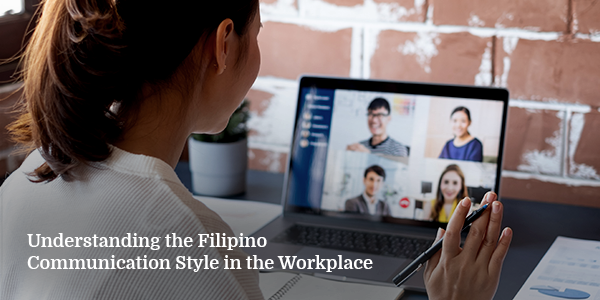
The Filipino communication style in the workplace can be different from other cultures and nationalities, which is important to understand when working with them.
There are some common patterns to pay attention to when communicating with Filipinos. Recognizing these will help you establish a good rapport with them and foster a positive relationship.
Filipinos tend to work better in environments where team members are open to each other, can share information freely, and are encouraged to innovate. This article aims to help you understand how Filipinos communicate in the workplace, starting with a brief breakdown of their communication style.
A Breakdown of the Filipino Communication Style
If you’ve ever had a Filipino coworker, chances are you’ve noticed that they tend to take a more indirect approach to communication. They may not opt for communicating their needs upfront to save face known as “hiya,” which is defined as shyness or shame, often related to self-image and pride.
This can be hard for Westerners to wrap their heads around, but if you want to understand better how Filipinos communicate in the workplace, here are some insights.
High-context
When working with Filipino employees, it’s important to remember that their communication style is high-context. That means the person on the receiving end of a message must read between the lines to fully understand what’s being said.
It’s essential to look for non-verbal cues, like body language and facial expressions, as well as what they say directly. Filipinos don’t always make their intentions clear when speaking and will often wait for other people to figure out what they mean instead of saying it outright.
This can be frustrating for Westerners who are used to direct communication. You can handle this properly by being clear and concise, so they know what’s being asked of them.
Indirect
As mentioned, Filipinos are indirect communicators—they often skirt around an issue rather than address it head-on, making it difficult for Westerners to understand what they’re saying exactly or why they’re saying it.
However, this is a huge part of Filipino culture, so when you’re talking to them, words such as “maybe” can mean they disagree, but in a gentle manner. Business owners and colleagues have to adjust to this communication style by taking a direct or indirect approach.
The difference between the two is that a direct approach relies on effective and short messages while indirect focuses more on a polite message, which is related to the concept of “saving face.”
When speaking with them, you should also be prepared for long pauses between phrases or sentences. Filipinos are very thoughtful people who take the time to process their thoughts before speaking.
Non-confrontational
Filipino offshore employees generally have passive personalities. They will try to avoid any confrontation when faced with difficult situations, so it’s important to compromise and communicate with them frequently.
Hierarchical
Filipinos typically address hierarchy and authority in the workplace, as this is deeply embedded into their culture. This means that they tend not only to avoid conflict but also rank employees according to seniority and status within the organization.
Additionally, Filipinos use po and opo, “ma’am” and “sir” often in conversations, which can feel off-putting for most Westerners who are used to more casual forms of address like first names or nicknames.
Collectivist
Filipinos lean toward collectivism, where the group comes before individual interests. This comes from the concept of family, where the family’s needs are prioritized over the individual’s.
They are naturally group-oriented and conform to the will of their peers. This influences the dynamics within the office as high social conformity means people tend to avoid confrontation, which can have a positive or negative effect. One possible outcome is that they will hesitate to speak their mind, making it hard for them to open up to ideas.
Face culture
Face culture is a way of communicating that emphasizes the importance of maintaining appearances. It’s a phenomenon specific to Filipino culture and has much to do with relationships. It’s about building a sense of self through the eyes of others based on respect, humility, and harmony.
The Filipino communication style in the workplace is characterized by indirectness, politeness, and an emphasis on saving face. They’ll be polite and respectful of others’ feelings when communicating and avoid being confrontational to preserve harmony among their coworkers.
A Unique Way of Communication
Filipino communication styles vary from those of other cultures, which is a fact that some may find off-putting at first. But with a little effort and imagination, it’s possible to get along with them just fine. The key is understanding how Filipinos communicate in the workplace and using it to your advantage when dealing with them.
If you’re looking to expand your business operations overseas and would like to bring on a dedicated offshore team of professionals to help out, Manila Recruitment, the top recruitment agency in the Philippines, is here to help you out. For more information, visit the website today and get in touch with us!













